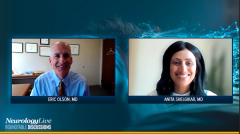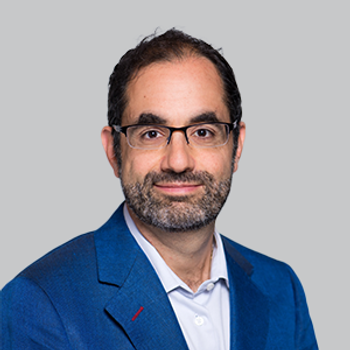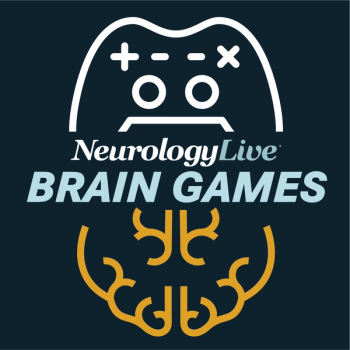
Accelerometry Assessment of Factors Related to how TAK-861 Affects Disrupted Sleep in People with Narcolepsy Type 1
In episode 5, the sleep specialists examine actigraphy data from a study of TAK-861 in narcolepsy type 1 and discuss the promise of home-based sleep tracking in clinical care. [WATCH TIME: 3 minutes]
Episodes in this series

WATCH TIME: 6 minutes
In this special report series from NeurologyLive, leading sleep medicine experts Eric Olson, MD, and Anita Shelgikar, MD—president-elect of the American Academy of Sleep Medicine—offer their perspectives on six late-breaking presentations from the
Throughout the series, the discussion covers a range of pressing topics, from cardiovascular safety and high-dose efficacy of low-sodium oxybate to investigational therapies like TAK-861 and ALKS 2680. The panel also unpacks trends in prescribing behavior and the influence of social determinants of health, offering a comprehensive look at the evolving treatment landscape for central disorders of hypersomnolence.
This next episode covers a study evaluating actigraphy as a tool for tracking nighttime sleep disruption in patients with narcolepsy type 1, both with and without treatment using the orexin-2 receptor agonist TAK-861. In the discussion, Olson and Shelgikar detail the strengths and limitations of actigraphy, its role alongside traditional assessments, and how wearable technology could enhance long-term symptom monitoring. The conversation also highlights the need for improved access and reimbursement for such tools in routine care.
Transcript edited for clarity.
Eric Olson, MD: The next abstract is titled “Accelerometry Assessment of Factors Related to How TAK-861 Affects Disrupted Sleep in People With Narcolepsy Type 1.” TAK-861 is an oral, selective orexin-2 receptor agonist being developed by Takeda. There’s a lot going on in this abstract, but let me try to summarize it.
Narcolepsy type 1 is known for disrupted nighttime sleep. This study aimed to explore whether actigraphy is a viable tool to measure that disruption in two groups. First, they used actigraphy in 16 people with narcolepsy type 1 not taking the study drug and compared them to 16 matched controls. In that comparison, the narcolepsy group had about 11% lower sleep efficiency, roughly an hour less total sleep time, and around 45 minutes more wakefulness after sleep onset.
Next, they looked at actigraphy in 112 patients participating in a phase 2 trial of TAK-861. They compared sleep data from at-home actigraphy to in-lab polysomnography. They found that patients went to bed over an hour later and spent about 30 minutes less time in bed at home versus in the lab. Sleep efficiency was nearly 8% lower at home. They also noted that actigraphy captured a signal of initial insomnia during the first week of treatment.
So, the big takeaway is that actigraphy appears to be a viable method to track sleep quality at home in patients with narcolepsy type 1, and it may provide useful insights beyond what we get from standard lab-based assessments.
Anita Shelgikar, MD: Thanks for that summary, Eric. I think this is really intriguing and important. It highlights the value of measuring sleep in the patient's home environment, which is a more natural setting compared to the artificial sleep lab.
Of course, we have to remember that actigraphy is a surrogate—it estimates sleep based on movement, not direct measurement. But it can complement sleep diaries and self-reports. It may also help us identify trends that prompt new questions or interventions to better address sleep fragmentation and daytime alertness.
Eric Olson, MD: Well said. It reminds me that we can’t lose sight of the basics—asking about sleep quantity and patterns. If medications aren’t providing the desired benefits, it’s worth reevaluating how much sleep the patient is actually getting.
It’s frustrating, though, that even as actigraphy shows more utility, it remains hard to get reimbursed, which limits its clinical application in real-world settings.
Anita Shelgikar, MD: I agree. That’s the reality of trying to use evidence-based tools in routine care. What’s exciting is that this moves beyond diagnostics—it’s about longitudinal monitoring, treatment response, and integrating actigraphy into day-to-day patient management. But for that to happen, reimbursement and access will be critical.
Eric Olson, MD: Exactly. It would be interesting to repeat this type of study using commercially available wrist trackers to see if we can replicate the findings. I imagine we could, and that could be a path forward for broader use.
REFERENCE
1. Torres R, Onorati F, Karas M, et al. Accelerometry Assessment of Factors Related to how TAK-861 Affects Disrupted Sleep in People with Narcolepsy Type 1. Presented at: SLEEP 2025 Annual Meeting; June 8-11; Seattle, WA. ABSTRACT LBA 1670
Newsletter
Keep your finger on the pulse of neurology—subscribe to NeurologyLive for expert interviews, new data, and breakthrough treatment updates.
































